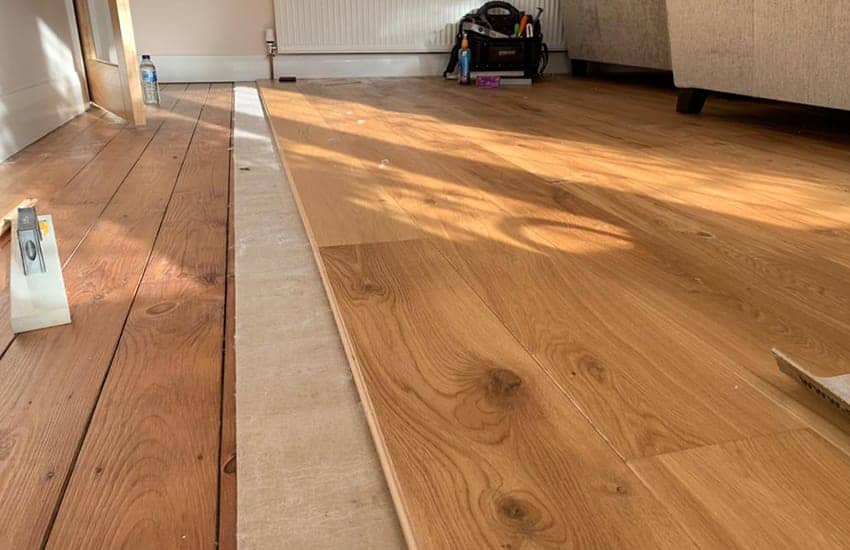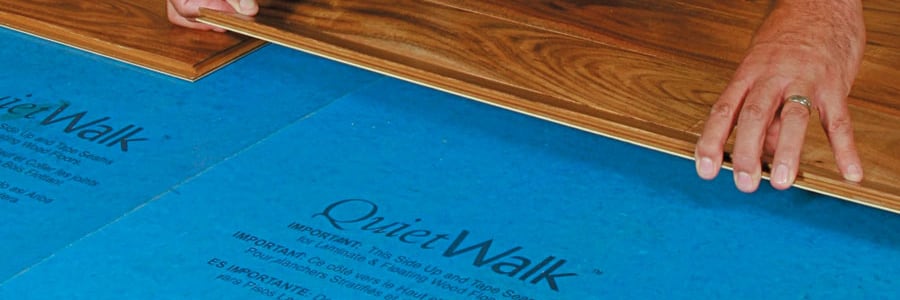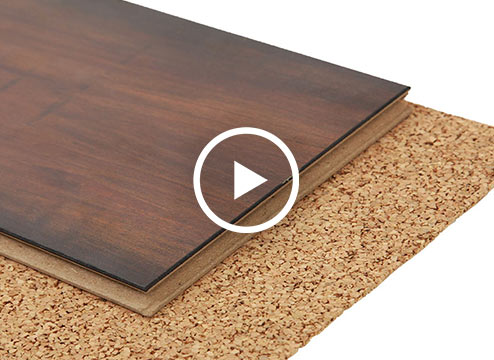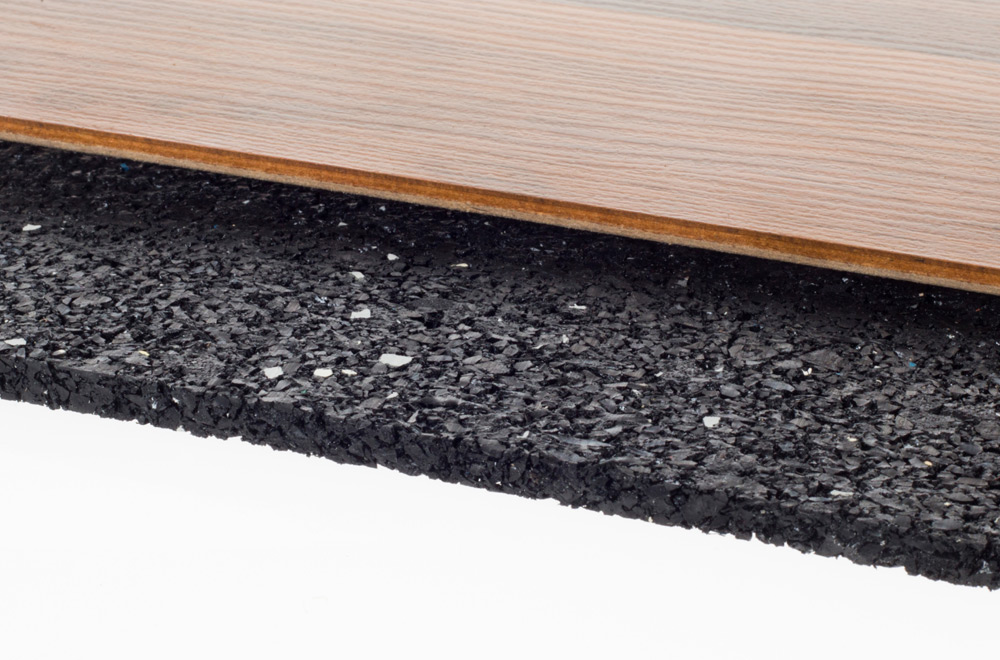When it comes to solid wood flooring, selecting the appropriate underlay is crucial to ensure optimal performance, durability, and comfort. Here are a few key considerations for choosing the right underlay for solid wood flooring:
- Moisture Barrier: One of the primary functions of underlay for solid wood flooring is to act as a moisture barrier. Moisture can seep up through the subfloor and affect the wood, causing warping, swelling, or cupping. Look for underlay options that have moisture-resistant properties or incorporate a vapor barrier to protect the wood flooring from moisture damage.
- Sound Insulation: Underlay can help reduce noise transmission, especially in multi-story buildings or rooms where noise control is important. Look for underlay with sound-dampening properties to minimize impact noise and improve acoustics.
- Subfloor Imperfections: Underlay can help compensate for minor subfloor imperfections, such as unevenness or slight irregularities. Choose an underlay with good leveling and cushioning properties to create a smooth and comfortable surface for your solid wood flooring.
- Thermal Insulation: Underlay with thermal insulation properties can help improve the overall energy efficiency of your space by reducing heat loss through the floor. This can be especially beneficial in colder climates or rooms above unheated spaces.
- Compatibility: Ensure that the underlay you choose is compatible with solid wood flooring. Some types of solid wood flooring may require specific underlay options to meet manufacturer recommendations or warranty requirements. Check with the flooring manufacturer or supplier for their recommended underlay options.
- Thickness and Density: Consider the thickness and density of the underlay. Thicker underlay can provide better sound insulation and cushioning, while denser underlay can offer improved stability and support for the wood flooring.
- Installation Method: Depending on the installation method of your solid wood flooring (e.g., nail-down, glue-down, or floating), there may be specific underlay requirements. Follow the manufacturer’s installation guidelines to ensure proper compatibility and performance.
It’s important to note that underlay options can vary based on regional availability and specific product offerings. Consulting with a flooring professional or supplier can provide valuable guidance and recommendations for selecting the most suitable underlay for your specific solid wood flooring type and installation requirements.

Hardwood Flooring Underlayment – Non-Toxic, Effective – Green
Underlayment Buyeru0027s Guide
WhisperMat-HW Hardwood Underlay 3u0027 x 50u0027 roll
Guide to Hardwood Underlayment HardWood Planet Flooring
Serenity Underlay™ For Nailed Down Wood Floors
Hardwood Floor Underlayment Options
ProBase® Rubber Underlayment For Engineered Hardwood u0026 Laminate
Fortifiber 70-195 Tile Underlayment Roll, 500 sq. ft., Brown
All About Underlayments
Can You Add Padding Under a Hardwood Floor?
Related Posts:
- Real Wood Flooring In Kitchen
- Wood Floor Kitchen Cabinet Combination Designs
- Solid Wood Floor Repair Kit
- Dark Wood Floor Finishes
- Light Oak Solid Wood Flooring
- Grey Wood Floor In Bathroom
- Pledge Wood Floor Cleaner Spray
- Wide Plank Wood Flooring Cost
- Light Wood Flooring Ideas
- Click Lock Wood Flooring Pros And Cons
What is Underlay For Solid Wood Flooring?
Underlay for solid wood flooring is a term referring to the material that is placed beneath the surface of the floor to provide additional support and cushion. It is essential for maintaining the integrity of the floor and for ensuring that it looks its best. Underlay can be made from a variety of materials, including felt, foam, rubber, and cork. It is usually installed before the hardwood flooring is laid, and can provide a number of benefits to homeowners.
Benefits of Installing Underlay For Solid Wood Flooring
Underlay for solid wood flooring provides many advantages to homeowners, such as reducing noise and providing extra comfort. In addition, it can help extend the life of the wood by protecting it from scratches or dents caused by furniture or other items on the floor. The underlay also acts as an insulator, helping to keep heat in and cold out during winter months. Finally, it can add structural stability to the floor, making it less prone to warping or buckling.
Types of Underlay For Solid Wood Flooring
There are several types of underlay available for solid wood floors, each with its own unique benefits. Felt underlay is a popular choice because it is inexpensive and provides excellent sound-proofing properties. Foam underlay is lightweight and provides superior insulation compared to felt. Rubber underlay is more durable than foam but can be more expensive. Cork underlay provides excellent insulation and soundproofing, but may require additional installation time due to its complexity.
How To Install Underlay For Solid Wood Flooring
Installing underlay for solid wood flooring is relatively straightforward and can be done by most DIY enthusiasts with some basic tools and knowledge. The first step is to measure the dimensions of the room, then purchase enough underlay material to cover the entire area. Once that has been done, roll out the underlay and cut it to size using scissors or a sharp knife. Make sure to leave a gap between pieces so they can expand and contract with temperature changes. Finally, use heavy-duty staples or glue to secure the underlay in place.
FAQs About Underlay For Solid Wood Flooring
Are there different types of underlay available?
Yes, there are several types of underlay available for solid wood floors including felt, foam, rubber, and cork. Each type has its own unique benefits so you’ll need to determine which type best fits your needs before making a purchase.
Do I need to install underlay for solid wood flooring?
Yes, installing underlay is essential for maintaining the integrity of your solid wood floor and ensuring it looks its best. It also provides additional benefits such as reducing noise levels and providing extra comfort when walking on the floor.
Can I install the underlay myself?
Yes, in most cases installing the underlay yourself is perfectly feasible if you have some basic DIY knowledge and tools. However, if you’re unsure about how to do it or don’t have the right tools, then it’s best to hire a professional installer who can ensure that it’s installed correctly.




.jpg)




/installing-hardwood-floor-155149312-57e967d45f9b586c35ade84a.jpg)